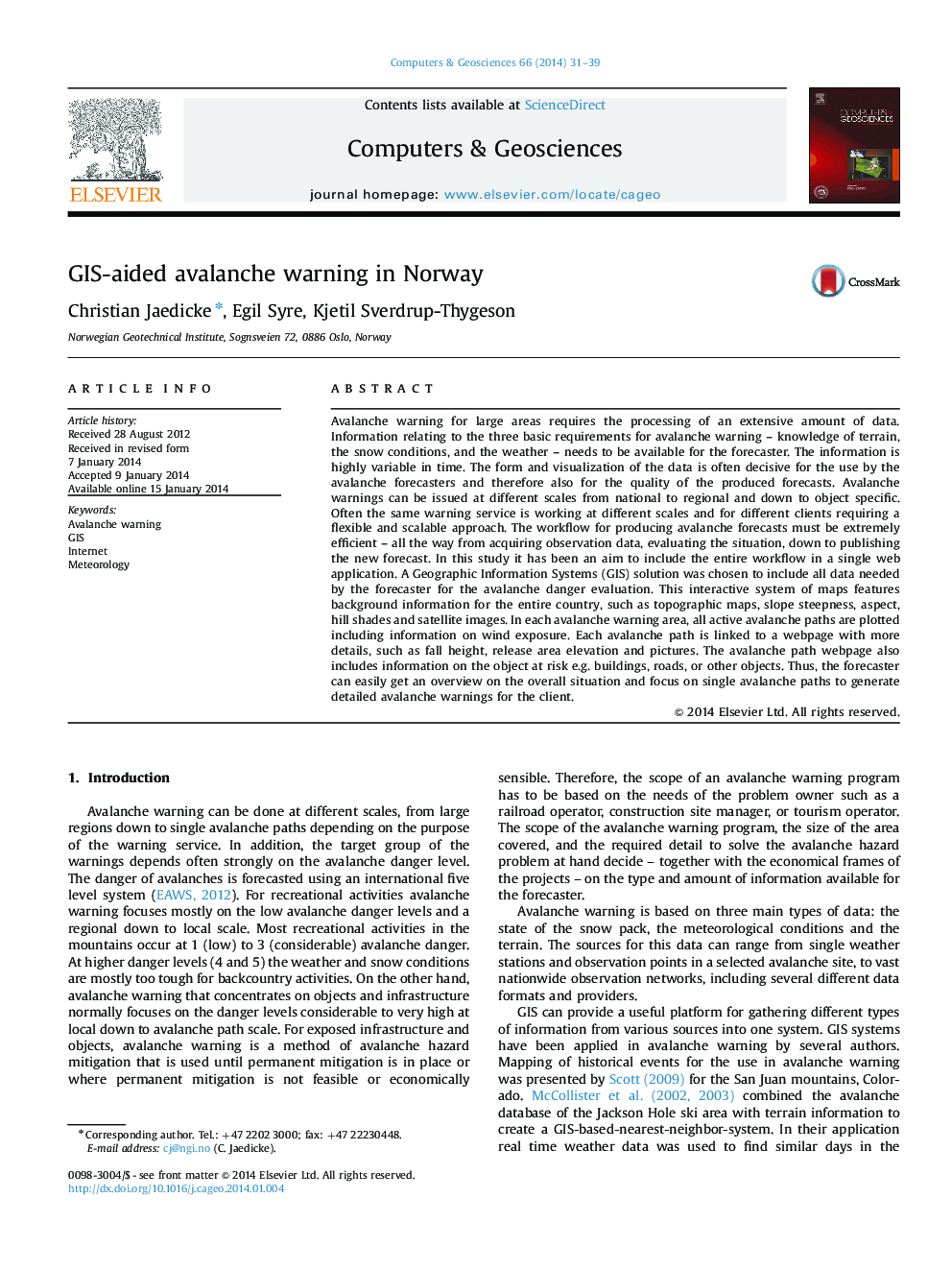| Article ID | Journal | Published Year | Pages | File Type |
|---|---|---|---|---|
| 6922763 | Computers & Geosciences | 2014 | 9 Pages |
Abstract
Avalanche warning for large areas requires the processing of an extensive amount of data. Information relating to the three basic requirements for avalanche warning - knowledge of terrain, the snow conditions, and the weather - needs to be available for the forecaster. The information is highly variable in time. The form and visualization of the data is often decisive for the use by the avalanche forecasters and therefore also for the quality of the produced forecasts. Avalanche warnings can be issued at different scales from national to regional and down to object specific. Often the same warning service is working at different scales and for different clients requiring a flexible and scalable approach. The workflow for producing avalanche forecasts must be extremely efficient - all the way from acquiring observation data, evaluating the situation, down to publishing the new forecast. In this study it has been an aim to include the entire workflow in a single web application. A Geographic Information Systems (GIS) solution was chosen to include all data needed by the forecaster for the avalanche danger evaluation. This interactive system of maps features background information for the entire country, such as topographic maps, slope steepness, aspect, hill shades and satellite images. In each avalanche warning area, all active avalanche paths are plotted including information on wind exposure. Each avalanche path is linked to a webpage with more details, such as fall height, release area elevation and pictures. The avalanche path webpage also includes information on the object at risk e.g. buildings, roads, or other objects. Thus, the forecaster can easily get an overview on the overall situation and focus on single avalanche paths to generate detailed avalanche warnings for the client.
Related Topics
Physical Sciences and Engineering
Computer Science
Computer Science Applications
Authors
Christian Jaedicke, Egil Syre, Kjetil Sverdrup-Thygeson,
